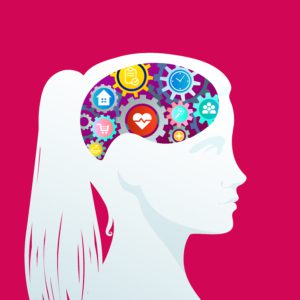
Up until now, those in the medical community have largely had to rely upon a patient’s feedback when it comes to the details regarding chronic pain. The information they receive is subjective and potentially hampered if there are any communication limitations. There is hope that this will change with the news of a biomarker for chronic pain that researchers have discovered.
Researchers set out to see if they could identify any biomarker that takes place during chronic pain. A biomarker provides objective information about what is happening in a cell or area of the body so that the data is something that can be measured accurately and consistently. Being able to identify a biomarker that is associated with chronic pain provides a signal and in-depth details to health professionals about the chronic pain episodes the person may be experiencing.
Like what you’re learning? Download a brochure for our online, postgraduate pain medicine certificate or master’s degree program in partnership with the Keck School of Medicine of USC.
In the May 2023 issue of the journal Nature Neuroscience, researchers published their study that was conducted in which they have identified a biomarker for chronic pain (1). To learn about it, they did a study that included four people who experienced refractory neuropathic pain that was limited to one side for at least a year. The study involved long-term implantation of intracranial electrodes in two areas of the brain, including the anterior cingulate cortex (ACC) and orbitofrontal cortex (OFC). Three of the study participants had suffered from post-stroke pain, with the fourth experiencing phantom limb pain.
Study participants recorded pain scores throughout the day, from 78 to 184 days. They also completed pain questionnaires. Using the information gathered, they could compare and identify signatures in brain activity with chronic pain episodes that differed from acute pain. They were able to identify that the patterns of activity differ between acute and chronic pain. With that information, they could make predictions about the chronic pain episodes.
This is an essential finding in the chronic pain field because the information may help clinicians and patients better manage chronic pain. The more we can understand about it, including the brain activity and signals, the better we will be in helping to bring about pain relief. While the biomarkers have been lacking until this point, things are moving in the right direction. As more information becomes available about predicting chronic pain and being able to identify the biomarkers, the more hope there is for chronic pain relief.
Earn an Online Postgraduate Degree in Pain Medicine
Like what you’re learning? Consider enrolling in the Herman Ostrow School of Dentistry of USC’s online, competency-based certificate or master’s program in Pain Medicine in partnership with the Keck School of Medicine of USC.
Sources:
Nature Neuroscience. First-in-human prediction of chronic pain state using intracranial neural biomarkers. May 2023.
This article was originally published on Confronting Chronic Pain by Dr. Steven Richeimer, Director Pain Medicine Master and Certificate.